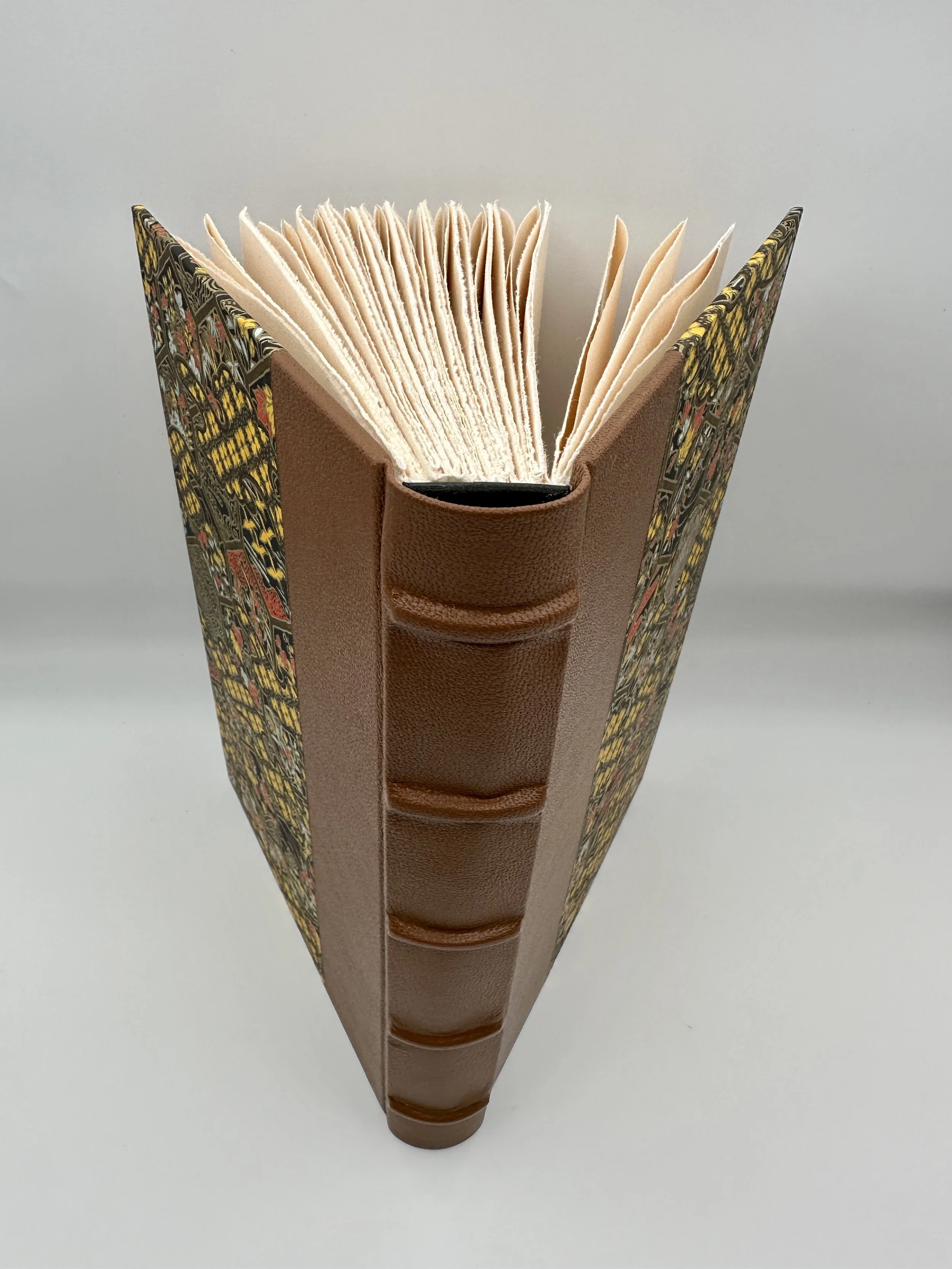Morgan
N.B. This is a commission and nfs.
This archival, hand-sewn album is made from 100 gsm, rose Hahnemühle Ingres mouldmade paper from Dassel, Germany since 1584, sewn with Irish linen thread in the linked pattern that was developed by the ancient Copts. This stitch allows the book to lay open easily at any page.
This book’s endbands are goatskin. Its boards are wrapped in paper that was hand silk-screened in Japan at a factory where kimono silks are decorated, and its spine is covered in Alran French goatskin that was processed at Rocky Mountain Leather Supply in Utah.
Treasure binding began with monks in the 6th Century who would encrust volumes with jewels. During the Renaissance, there was a resurgence in treasure binding. This is a contemporary revival of the treasure binding in which a lucky charm has been embedded in the cover of this book.
The talisman in this book is a souvenir from the 1889 Exposition Universelle, the World’s Fair for which the Eiffel Tower was built. Initially, its builders planned to dismantle the Eiffel Tower after 20 years, but it became such a beloved Parisian landmark, that it remains today. The future will adore you, too.
N.B. This is a commission and nfs.
This archival, hand-sewn album is made from 100 gsm, rose Hahnemühle Ingres mouldmade paper from Dassel, Germany since 1584, sewn with Irish linen thread in the linked pattern that was developed by the ancient Copts. This stitch allows the book to lay open easily at any page.
This book’s endbands are goatskin. Its boards are wrapped in paper that was hand silk-screened in Japan at a factory where kimono silks are decorated, and its spine is covered in Alran French goatskin that was processed at Rocky Mountain Leather Supply in Utah.
Treasure binding began with monks in the 6th Century who would encrust volumes with jewels. During the Renaissance, there was a resurgence in treasure binding. This is a contemporary revival of the treasure binding in which a lucky charm has been embedded in the cover of this book.
The talisman in this book is a souvenir from the 1889 Exposition Universelle, the World’s Fair for which the Eiffel Tower was built. Initially, its builders planned to dismantle the Eiffel Tower after 20 years, but it became such a beloved Parisian landmark, that it remains today. The future will adore you, too.
N.B. This is a commission and nfs.
This archival, hand-sewn album is made from 100 gsm, rose Hahnemühle Ingres mouldmade paper from Dassel, Germany since 1584, sewn with Irish linen thread in the linked pattern that was developed by the ancient Copts. This stitch allows the book to lay open easily at any page.
This book’s endbands are goatskin. Its boards are wrapped in paper that was hand silk-screened in Japan at a factory where kimono silks are decorated, and its spine is covered in Alran French goatskin that was processed at Rocky Mountain Leather Supply in Utah.
Treasure binding began with monks in the 6th Century who would encrust volumes with jewels. During the Renaissance, there was a resurgence in treasure binding. This is a contemporary revival of the treasure binding in which a lucky charm has been embedded in the cover of this book.
The talisman in this book is a souvenir from the 1889 Exposition Universelle, the World’s Fair for which the Eiffel Tower was built. Initially, its builders planned to dismantle the Eiffel Tower after 20 years, but it became such a beloved Parisian landmark, that it remains today. The future will adore you, too.








